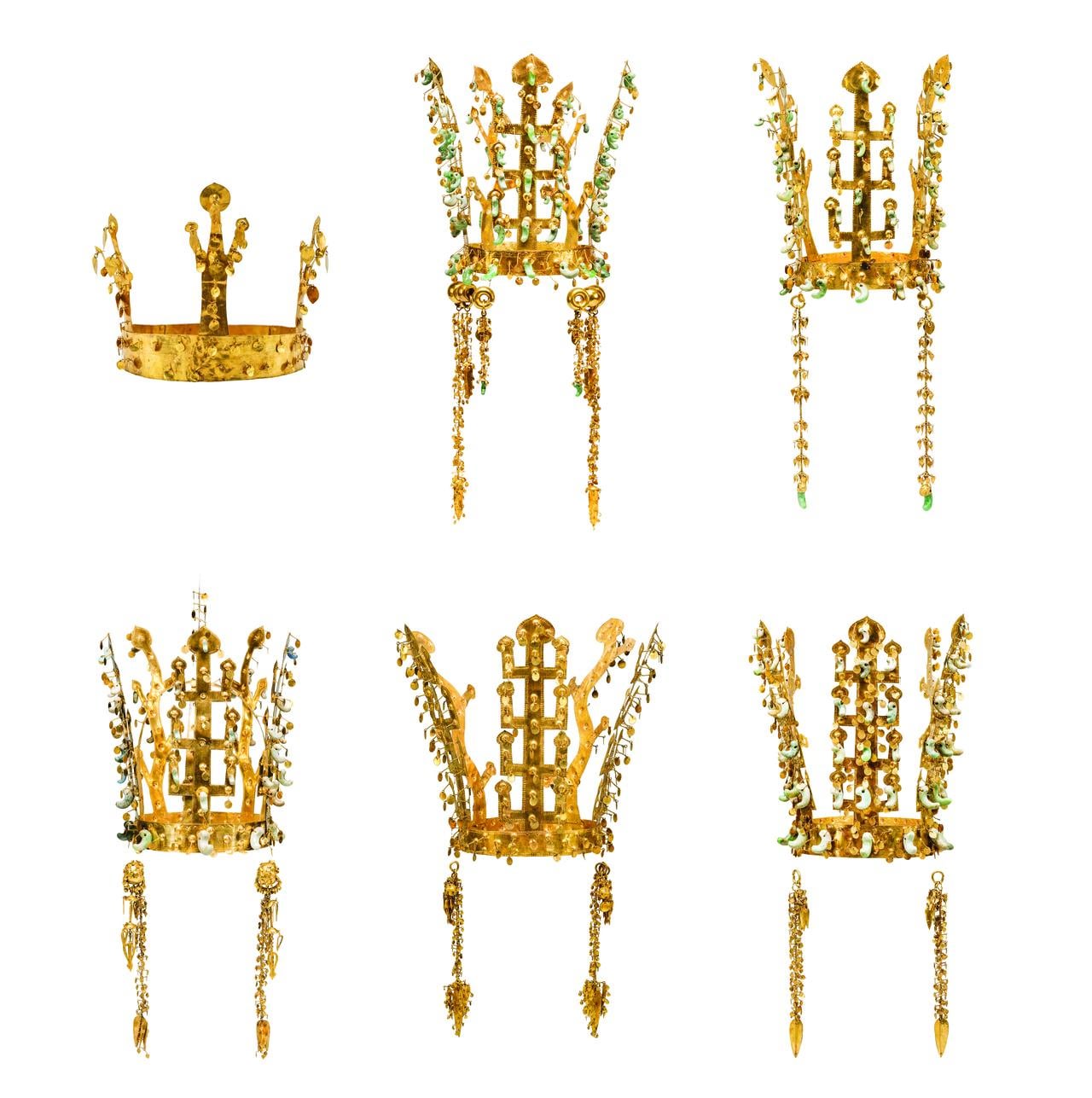
These golden crowns are from Silla Kingdom (57 BC – 935 AD) which is the first Korean kingdom to unify Korean peninsular and known as the most economically prosperous and culturally splendid kingdom in Korean history. Those are also known to have been presented by the South Korean president to US President Donald Trump as a 24K gold replica at the 2025 APEC summit.
They were so rich in gold that their capital 'Seorabeol' literally means the "City of Gold (Classical Chineae: 金/Gold, 城/Region)". Its influence is still prominent because Silla lasted about 1,000 years and never changed its capital: The current South Korean capital's name literally means "capital" in Korean language, 'Seoul', and this word was derived from 'Seorabeol'. (Ironically, the city Seoul's geographical location is completely opposite to Seorabeol, Modern-day Gyeongju 😅)
The Silla artifacts excavated are so splendid and luxurious that they can be immediately distinguished from the other Korean kingdoms. Also, Silla served as the final destinations of the Silk Road. According to the records of Arab and Persian merchants who visited Silla, they described Silla as "the buildings were coated with gold", "even dogs were given gold necklaces". Source: 《Kitab al-Masalik wal-Mamalik》 (Book of Roads and Kingdoms) by Ibn Khurdadbih, 846 AD
As you can see here, Silla had the most active exchanges with Middle Eastern countries in ancient Korea. Silla kingdom literally appeared in Persian epic,《Kush Nama》by Hakim Iranshan from 11th century Seljuk Empire. The epic tells the story of a Persian prince settling in Silla and marrying Silla's princess in the 7th century. In 2016, South Korea and Iran also performed a play based on 《Kush Nama》 together.
After the 7th century, splendid artifacts like this gold crown disappeared from Korea. China's influence is significant in shifting Korea from a vibrant culture (similar to that of South Asia/Middle East) to a minimalist culture unique to East Asia (Current Japan and Ancient China)
Silla's gold crowns represent Korea before the big Chinese influence. Korean people's roots are Northern Nomadic Shamanism (Maripgan/Scythian) and it is entirely distinct from Chinese people. Excessive gold was a trait of nomads like the Xiongnu and Xianbei, which the Chinese viewed as 'barbaric.'
Through its minimalist aesthetic, Chinese considered themselves superior to other ethnic groups who decorate with jewels and gold. This superiority is due to their academic and philosophical advancement.
I recommend to google for 'portrait of Song Dynasty emperor'. They are the emperors of the world's wealthiest empire (also the most advanced empire in China's history who were near industrial revolution), but wearing plain clothes without any decorations, and simple black hat, which contrast with Korea's golden crown with jewelry.
Think of Koreans as Northern nomads who were later Sinicized. Just like how Germanic Brits were Romanized or Turks were Persianized.
Ironically, the China's minimalism(especially Song dynasty's) migrated to and matured in Japan, while mainland China shifted to vibrant maximalists under the foreign rule of the Yuan(Mongols) and Qing(Manchus).
Therefore, Japan and Korea are actually better preserving Ancient China's unique minimalist and simple aesthetics than China does today. Since the Mongol invasion, China has been under the rule of northern nomads, and their self-proclaimed "superior" minimalist culture has disappeared over time:
Vietnam was influenced by Chinese culture untill Qing. So, they have vibrant culture like current China and other SEA countries.
Korea was influenced by Chinese culture untill Ming, which is older than Qing. So, they have more minimalist culture than Vietnam.
Japan was influenced by Chinese culture untill Song, which is older than Ming. So, they have more minimalist culture than Korea.
This is personally the most interesting archaeological fact in East Asia.
Possible Questions
Q: Why search for portraits of Song emperors as examples of ancient Chinese minimalism? Doesn't the topic of this article, Silla, not align with the timing?
A: Although it is correct to be the Tang Dynasty in terms of timing, there are no portraits of the Tang Dynasty emperors left, and they were all painted by later. For exmaple, Emperor Taizong of Tang is wearing Ming's clothes in his later portrait which is on wikipedia rn.
Q: Why Korea's culture was influenced by China untill Ming? Weren't they also conquered by Manchus(Qing)?
A: Korea's cultural influence from China was not through conquest but through voluntary respect of 'civilized world'. Therefore, they accepted Ming's culture even though they were not militarily ruled by Ming, and even though they were militarily ruled by Qing, they refused to accept their culture because it was 'barbaric' to Koreans. Also, Qing did not have enough control in Korea to force its culture as it did to the Chinese and Vietnamese.
by yuchan063
